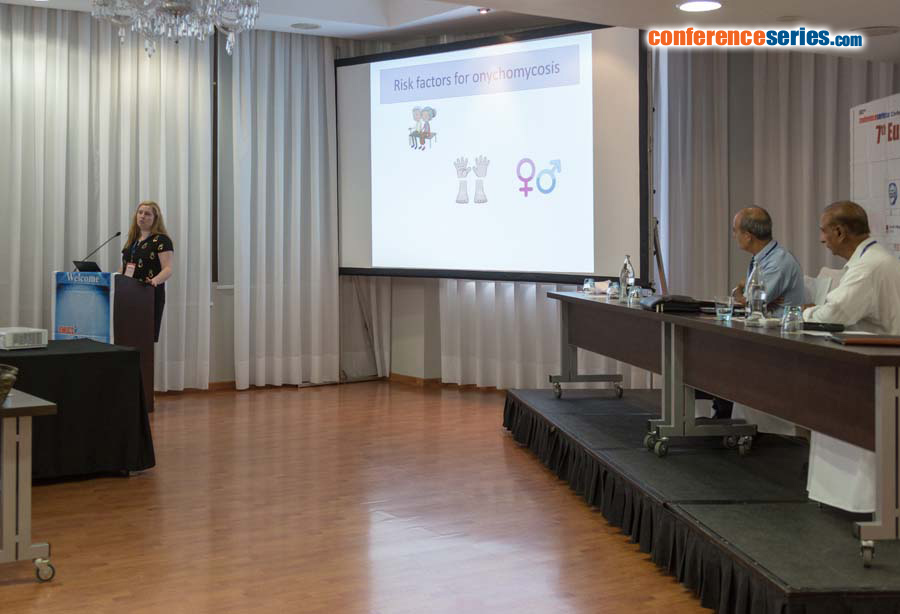
Eleonora Dubljanin
University of Belgrade, Serbia
Title: Application of a T. rubrum specific PCR and pan-dermatophyte PCR in the diagnosis of suspected onychomycosis in Serbian patients
Biography
Biography: Eleonora Dubljanin
Abstract
Background: The diagnosis of onychomycosis is still in most countries based on the demonstration of fungal elements in nail specimens by microscopy, culture and identification of the causative species. This is time-consuming, requires trained personnel and has sub-optimal sensitivity. Objectives: The aim of this study was to compare a conventional PCR based approach with traditional diagnostic methods using clinical nail specimens from patients with suspected onychomycosis from Serbia. Methods: One sample was collected from each of 183 patients with suspected onychomycosis from Serbia. All samples were subjected to direct microscopy (potassium hydroxide-KOH and Blankophor-BP), PCR and culture. Overall, three separately run PCR assays were employed: A specific PCR targeting T. rubrum and a pan-dermatophyte PCR followed by a T. interdigitale specific PCR for pan-dermatophyte positive but T. rubrum negative samples. Results: Direct microscopy, culture and PCR were positive in 84/183 (45.9%), 48/183 (26.2%) and 98/183 (53.5%) specimens, respectively. Dermatophytes were cultured in 47/183 (25.7%) with predominance of T. rubrum 44/48 (91.7%). Of 98 PCR positive samples, T. rubrum was detected in 83/98 (84.7%), T. interdigitale in 5/98 (5.1%), while the remaining 10 (10.2 %) were dermatophyte positive but not identified to species level. Conclusions: PCR has high sensitivity in nail specimens and offers rapid and accurate species identification which can reduce the number of consultations needed and empirical usage of antimycotics. This study demonstrated the applicability of the pan-dermatophyte and T. rubrum specific PCR in Serbia as being a rapid and reliable diagnostic tool for onychomycosis.





